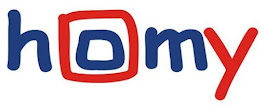[This guest post was written by Kira-Khanh McCarthy, a law clerk in the Trademark Group at Wolf, Greenfield & Sacks, P.C.]. Glow Concept petitioned to cancel a registration for the mark
UNICORN TEARS for "cosmetics and cosmetic preparations" due to alleged likelihood of confusion with an identical mark for lip gloss(es), as to which Petitioner asserted ownership and prior common law rights. The Board held that Petitioner failed to show trademark use and so did not meet the threshold requirement to prove that it had acquired proprietary rights in order to prevail in its Section 2(d) claim against Respondent Too Faced.
Glow Concept Inc. v. Too Faced Cosmetics, LLC, Cancellation No. 92067143 (Nov. 2, 2020) [not precedential] (Opinion by Judge Cindy B. Greenbaum).
Entitlement to Cause of Action: The Board briefly addressed Petitioner’s entitlement to a statutory cause of action (previously analyzed under the rubric of "standing"), finding that Glow Concept met the minimum requirement set forth in
Australian Therapeutic Supplies [
TTABlogged here], even though Glow Concept alleged only that it owns a pending application for the same mark without showing that the application stands refused in view of Too Faced's registration. [Note that the
Australian Therapeutic approach has been superseded by the CAFC's
Corcamore decision [
TTABlogged here]].
Priority: Pursuant to Section 14 of the Lanham Act, “[a] party claiming prior use of a registered mark may petition to cancel the registration on the basis of such prior use.” The petitioner bears the burden of proving it acquired proprietary rights in the claimed mark by a preponderance of the evidence. Respondent may rely on its registration as proof of constructive use of the mark as of its application filing date (in this case, March 31, 2016).
Here, the parties did not disagree on the relatedness of the goods. Thus, to prevail, Petitioner needed to prove it acquired proprietary rights in the mark before March 31, 2016. Since Petitioner had no prior registration and did not allege use analogous to trademark use, the Board analyzed Glow Concept’s actual use of the mark. For its case-in-chief, Petitioner presented the following evidence:
First, Glow Concept’s CEO testified that she invented the term UNICORN TEARS to identify a specific lip gloss, and that the company was using an in-house label (affixing the mark to lip glosses) as early as June 2015. The Board was unmoved by this evidence. It held that “[t]he act of ‘inventing’ a mark does not create prior rights” and, further, in-house labels do not constitute commercial use since there is no proof that the labels were exposed to prospective purchasers.
Second, Glow Concept claimed that it sold lip gloss under the mark in July 2015. As evidence, it submitted printouts from its website which displayed “a large graphic of lips modeling a particular shade of lip gloss, with the name of the color or shade in all capital letters on the next line” (e.g., UNICORN TEARS). The Board again did not find this to be actual use of the mark. “The display of ‘UNICORN TEARS’ on the . . . webpage shows use of the wording merely as a shade or color name for lip gloss . . . one of many such lip gloss shades or colors, and not as a source indicator.”

Third, as evidence that it actually sold lip gloss under the mark, Petitioner submitted a copy of an internal invoice (dated September 12, 2015) detailing a purchase for one “Unicorn Tears” lip gloss and one other shade of lip gloss. The Board was not buying this argument either. It held that the invoice did not constitute documentary evidence to support a finding that Petitioner used the term as a trademark (rather than to simply refer to the shade or color of a particular lip gloss), nor was it “apparent the internal company invoice was included in the shipment of the lip glosses to . . . the purchaser.”
Finally, Glow Concept contended that, from November 2015 to March 2016, it marketed the UNICORN TEARS lip gloss to a variety of vendors. As its evidence, Petitioner presented a series of emails representing its marketing activities. But, again, the Board noted that the email evidence only referenced the term “unicorn tears” twice, and both times it "plainly refer[red] to ‘unicorn tears’ as a shade name." "While a shade name
may also function as a trademark, see, e.g., In re Champion Int’l Corp., 183 USPQ 318, 320 (TTAB 1974), the record does not support such a finding here."
Conclusion: After considering all the evidence, the Board found that Petitioner used the term UNICORN TEARS as merely a shade name and not as a source identifier. Petitioner was unable to demonstrate that it acquired proprietary rights before Respondent’s constructive use date of March 31, 2016. It thus could not prevail in its claim of likelihood of confusion, and so the petition for cancellation was denied.
Read comments and post your comment here.
TTABlogger comment: What does a unicorn have to cry about, anyway?
Text Copyright Kira-Khanh McCarthy and John L. Welch 2020.















































